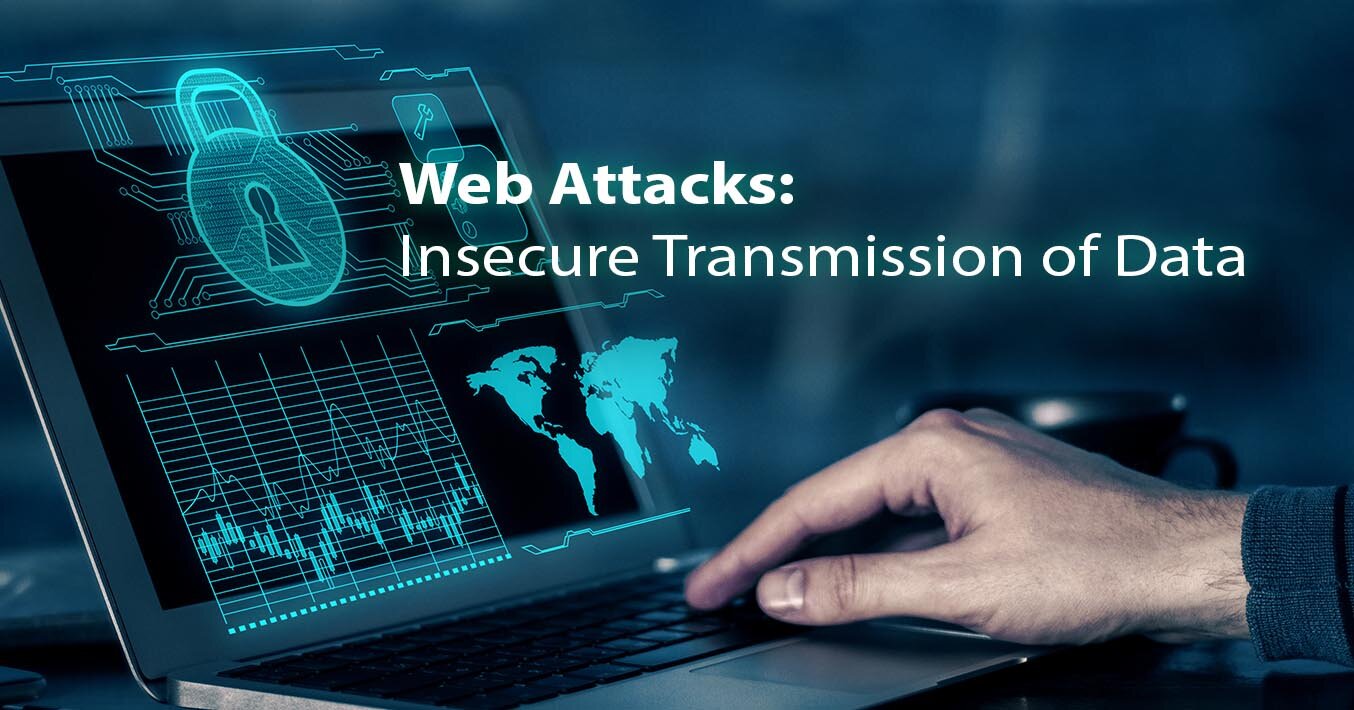Ask any penetration tester at Raxis, and they’ll tell you that we see insecure transmission of private data, often in the form of usernames and passwords, on many of the web application and external penetration tests we perform. There are a number of easily discoverable issues in play that can assist an attacker in gaining access to private information and internal systems. These vulnerabilities are a part of A3-Sensitive Data Exposure in OWASP’s 2017 Top 10 list.
Encrypting Data in Transit
Say you’re on a public Wi-Fi network at a coffee shop or a hotel, or even a private network that’s been compromised in a previous attack. An attacker on the same network can sniff traffic as it’s sent across the network or even outside of the network to the Internet. This is called a Man in the Middle (MitM) attack. Users on the network have no way to know that an attacker is monitoring their network traffic in this way.
To mimic a MitM attack, I used Wireshark to capture the network traffic from my own computer. First, I logged in to a website that does not use encryption. This site uses HTTP to send the credentials in cleartext, which you can see listed in the captured POST request below:
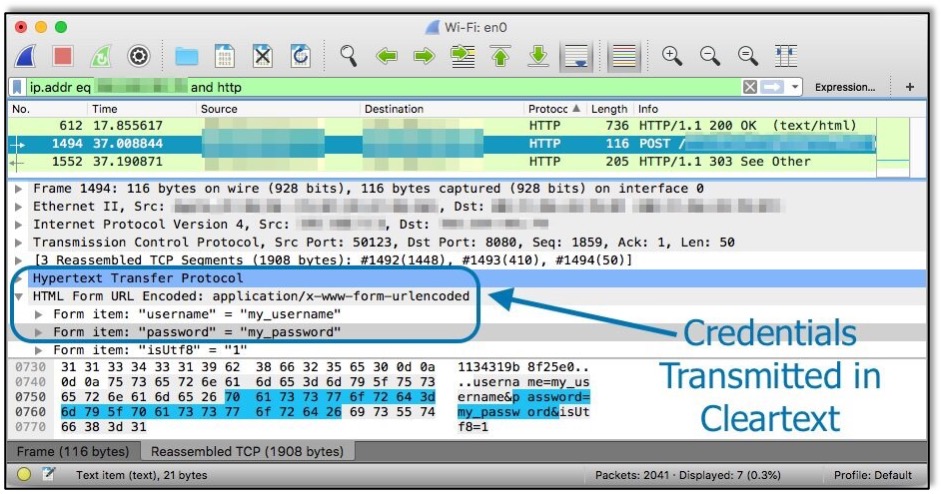
Now, let’s see what happens when I submit my credentials over an encrypted HTTPS connection:
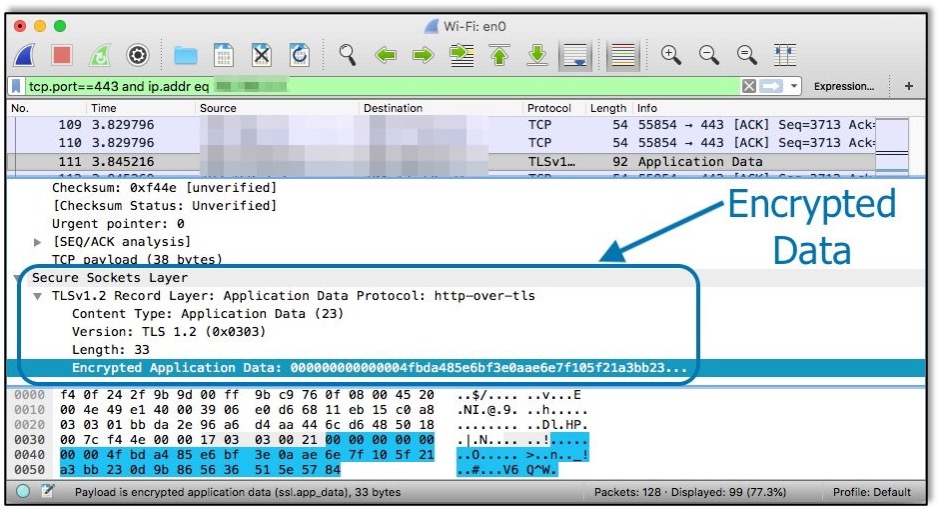
Even though I can sniff all network traffic between my computer and the website, I can not read the data itself. Private data such as user credentials, session tokens, and credit card numbers should always be encrypted in transit using HTTPS to protect users from man in the middle attacks.
Encoding is Not Encryption
We often run into websites that use Base64 or another form of encoding to protect data. It’s important to note that while encoding can be used to protect data from accidental manipulation or to make data easier to send and store, it does not offer any additional security than if the encoded data was to be left in cleartext. The fundamental difference between encoding and encryption is that while encoding is intentionally designed to be performed without the use of a key or secret, encryption is designed to protect the data from being accessed without such a key or secret.
In the example below, I used a free base64 decoding website to decode a base64 value. Feel free to use this website to see how easily you can decode this base64-encoded value:
RHJpbmsgWW91ciBPdmFsdGluZQ==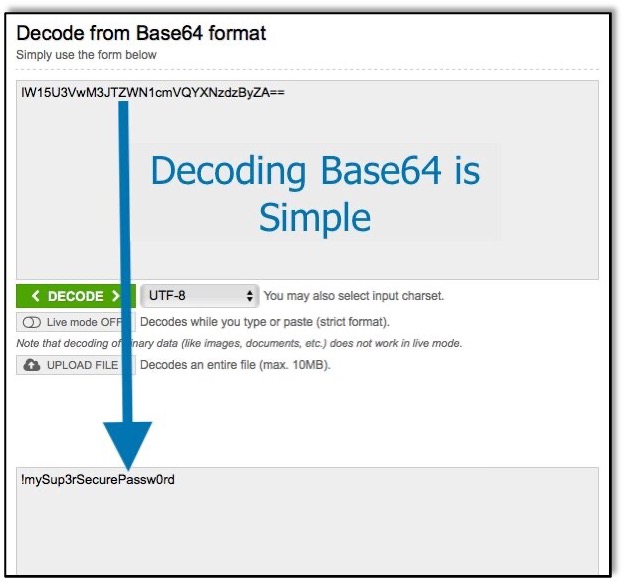
SSL Certificates
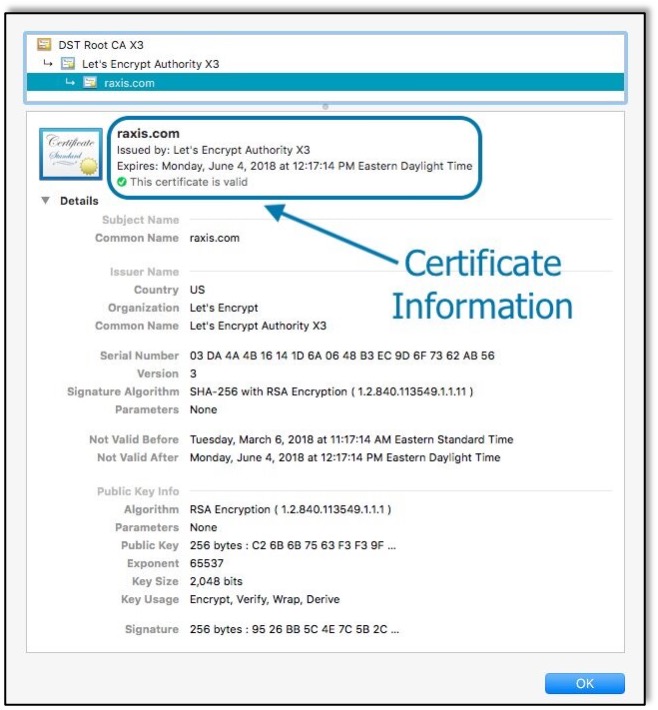
Now that you understand that sending private data in cleartext (or base64) is a bad idea and you’ve decided to use HTTPS for your site, you still need a valid SSL certificate before your site is secure. Without a valid SSL certificate, browsers will warn that your site is not secure as my browser did for this Nessus site that I run on my computer.
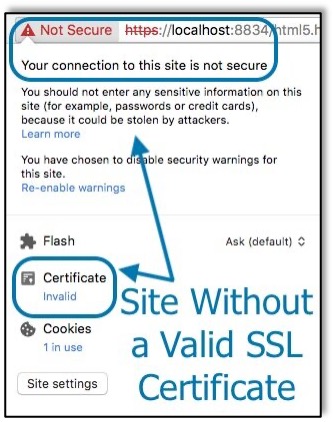
While errors like this can be acceptable on a private computer where I know what the site is and where I’m running it, it is not acceptable for an external website or an internal corporate network. An attacker trying to trick you into using a malicious site might use an invalid certificate such as the one above to trick you into using their site. Without a valid certificate, you cannot be sure whether the site is genuine and safe or not.
As a comparison, here is a site that uses a valid SSL certificate. The browser checks the certificate and validates that it’s secure.
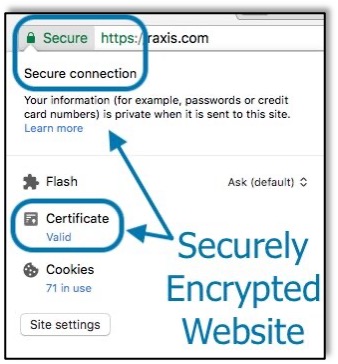
The browser also allows you to view the certificate yourself, should you want more detailed information about the issuer, subject, or public key. You can view all the details of why the browser declares the certificate as secure.
- It’s issued by a trusted Certificate Authority (CA), in this case a free CA called Let’s Encrypt
- It hasn’t expired yet
- It uses a strong encryption algorithm for the public key
This brings up a few common issues we see that make certificates insecure:
- The certificate is expired. Many companies don’t have a master list of certificates and their expiration dates, which can lead to forgotten certificates that don’t get replaced until a penetration test or customer complaint highlights the issue.
- The certificates is for the wrong website. Occasionally, companies many forward domain names to the server that uses the certificate or change existing ones without updating the certificate itself. Since the certificate wasn’t issued for the additional or modified domains, it is not a valid certificate for those domains.
- The certificate is self-signed. While it’s generally okay to self-sign certificates for fully internal sites provided the signing authority has been added to the trusted certificate store for all devices on the network, all external-facing sites should use an SSL certificate signed by a trusted Certificate Authority (CA).
The dangers with untrusted self-signed certificates are:
- An attacker could create their own self-signed certificate that looks nearly identical to the legitimate one.
- Many users will refuse to use the site because of the security errors browsers will show.
- Users who are willing to use the site will become accustomed to using sites with certificate errors, making them more likely to ignore these errors on a malicious site.
Encryption Ciphers and Protocols
Now that your webpages are being served over HTTPS with a valid certificate, let’s think about the strength of the encryption itself. Think of Julius Caesar using the now famous Caesar Cipher to encrypt secret military messages. Centuries later, it’s best not to use that cipher because it was cracked and is now common knowledge. If you’re interested in the history of encryption, Simon Singh’s The Code Book is a great read.
For the purposes of securing a website, we need to use complex encryption protocols and ciphers. Because attackers are always looking for flaws in these protections, we must always keep one step ahead and be sure to avoid using any weaker ciphers or protocols. SSLScan is a free tool that runs on Linux, Windows and macOS. Here is an SSLScan for https://raxis.com/. For a free online tool that can assess the ciphers and protocols on external facing sites, check out Qualys’ SSL Server Test. SSLScan shows all protocols and ciphers that the site accepts. Weak protocols and ciphers, if they were enabled for the site, would be listed in yellow or red.
Two types of protocols are commonly used: SSL (Secure Sockets Layer) and TLS (Transport Layer Security). All versions of SSL have been compromised and should not be used. There are multiple known exploits that attackers can use to gain access to your data or cause a denial of service attack if the data is transmitted using SSL. At the time of writing, the recommended protocol is TLSv1.2, although TLSv1.1 can be secure if configured correctly. TLSv1.3 is currently being drafted, so be sure to keep an eye out for that in the future. We always recommend removing weak protocols, such as SSLv2, SSLv3, and TLSv1.0, because SSL/TLS implementations support a downgrade process that allows an attacker to bypass a server’s secure protocols in favor of less secure protocols.
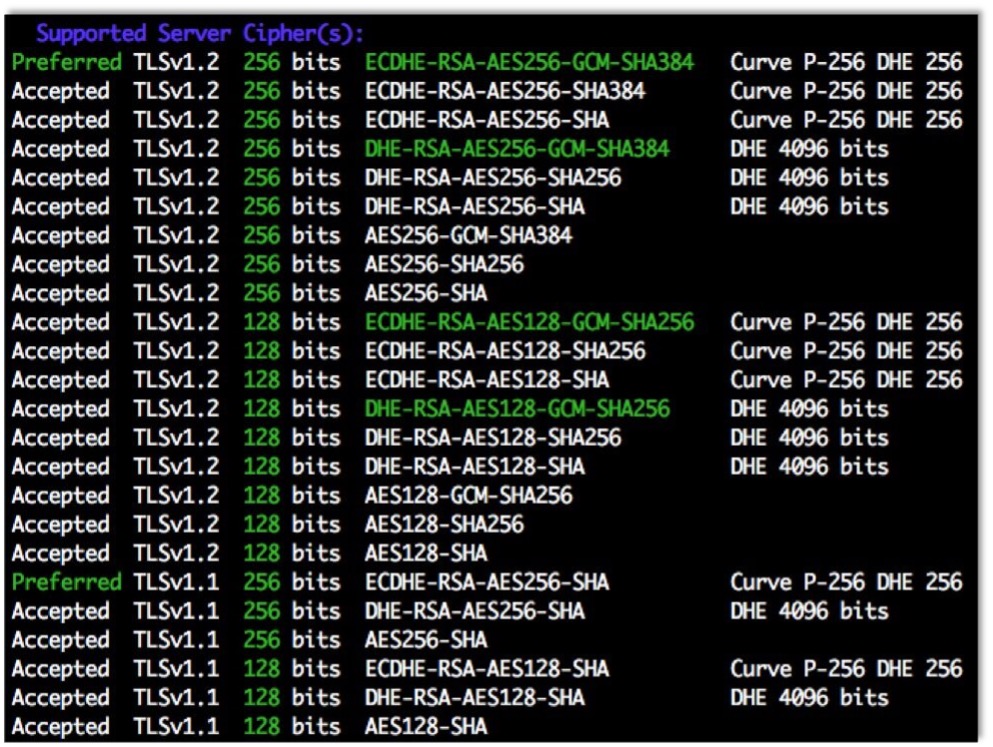
Each protocol provides many cipher suites, some more secure than others. Weak ciphers must be explicitly disabled on the server to ensure that cryptographically strong ciphers are used when transmitting private data. In the example above, https://raxis.com/ only uses strong ciphers and protocols.
What Web Developers Can Do to Protect Their Sites
There are a number of things that web developers and administrators can do to keep their sites secure and their users safe.
- Ensure that all private data, including credentials, session tokens, credit cards, medical data, and so on are encrypted in transit by enforcing the use of HTTPS.
- All resources on a page must be encrypted for the page to be considered secure. This means that graphics, scripts, and other behind-the-scenes files should be served over HTTPS as well.
- Use only certificates issued by a trusted Certificate Authority (CA).
- Replace certificates before they expire. Keep track of your company’s certificates using a tool, such as Venafi’s TLS Protect. This tool can even automatically replace expiring certificates.
- Use the TLSv1.2 protocol and disable older protocols where possible. If your site needs to support browser versions released prior to 2013, enable TLSv1.1, as these older versions do not support TLSv1.2. See Can I Use to see which browsers supports support TLSv1.2.
- Disable weak ciphers within your protocols’ cipher suites. Test thoroughly before making changes in production to ensure that your site doesn’t have outages. OWASP’s Transport Layer Protection Cheat Sheet is a great resource.
- Annual penetration tests can help you your web applications and external network continue to provide strong encryption to your users. Raxis’ Baseline Security Assessment can also help you keep a monthly watch for any issues.
What Users Can Do to Protect Themselves
While it’s up to website administrators to keep websites secure, users of these sites can keep themselves safe by being vigilant. Watch your browser. Never enter private data such as passwords, credit card numbers, and medical information if the website you’re using:
- Starts with http://
- Starts with https:// but shows a security error
- Close your browser if you see a security error when you are already logged in. Your private data could be sniffed by an attacker every time you submit a form or click a link.
- When on public Wi-Fi, such as free Wi-Fi offered in hotels or restaurants, use a VPN such as privateinternetaccess to ensure your private information is encrypted in transit.
- See OWASP’s Consumer Top Ten Safe Web Habits for more advice on how to browse the web safely.
Want to learn more? Take a look at the first part of our Web Attacks Series.

